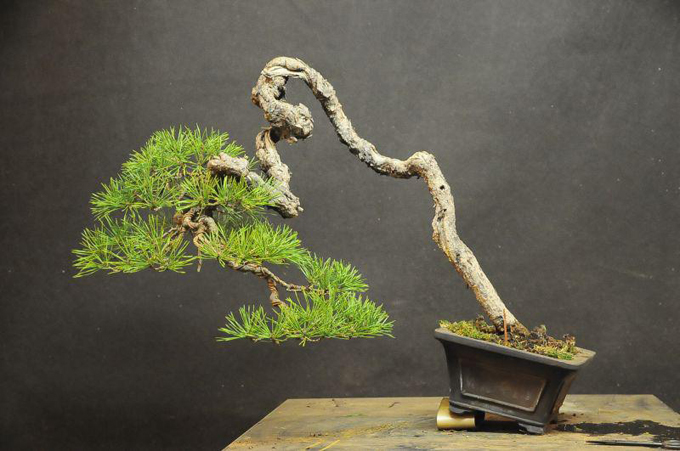 Unfinished, but wild and wonderful. I wonder what this Scot’s pine bunjin beauty looked like before it was collected somewhere in the wilds of Sweden. It belongs to Muaro Stemberger. It’s from his facebook page. Mauro also has a website. It’s called Italian Bonsai Dream.
Unfinished, but wild and wonderful. I wonder what this Scot’s pine bunjin beauty looked like before it was collected somewhere in the wilds of Sweden. It belongs to Muaro Stemberger. It’s from his facebook page. Mauro also has a website. It’s called Italian Bonsai Dream.
Traveling once again, so we’ll resume our archival explorations. This one, originally titled Bunjin Bonsai Bliss is from October, 2011 (with some current editing and elaboration), though any Bark discussion of Bunjin warrants a mention of Moving Out of the Bonsai Mainstream with a Deft and Delicate Touch (from December 2012), whose comments are the longest and perhaps the most interesting of any of our 900 plus posts so far. Andy Rutledge’s (and some other notables’) remarks triggered a fascinating mixture of insight and opinion, and even a mention of racism (one of Andy’s comments is below).
Bunjin or Literati, bonsai elegance by any name
The following is from something I wrote for The Magician: The Bonsai Art of Kimura.
“Bunjin style bonsai originated in China among scholars and artist who were known as literati, which is another name for bunjin. Originally, literati style bonsai – which dates back to the Tang Dynasty (618-907) – was influenced by Chinese brush painting. With a little imagination, the connection can be readily seen.
Perhaps the keys to understanding bunjin are the notions of simplicity and elegance. These qualities arise as expressions of freedom; freedom from conventional and habitual way thinking, doing and seeing. This type of freedom – which is highly valued in some traditional societies and is not easily obtained – results in a direct and immediate way of experiencing the world. This could be called intuition…”
On reflection, I think the quote above, though brilliant (smiley face) might be a little too general. Here’s something more specific that Andy Rutledge wrote in the aforementioned comments to a post from last year: “Bunjin is almost entirely concerned with wabi-sabi. Wabi, expressing modesty, melancholy, poverty, simplicity, loneliness, quiet dignity. Sabi, portraying great age, transience, patina, impermanence.” Andy has more to say on the topic, but this is a pretty good opening volley.
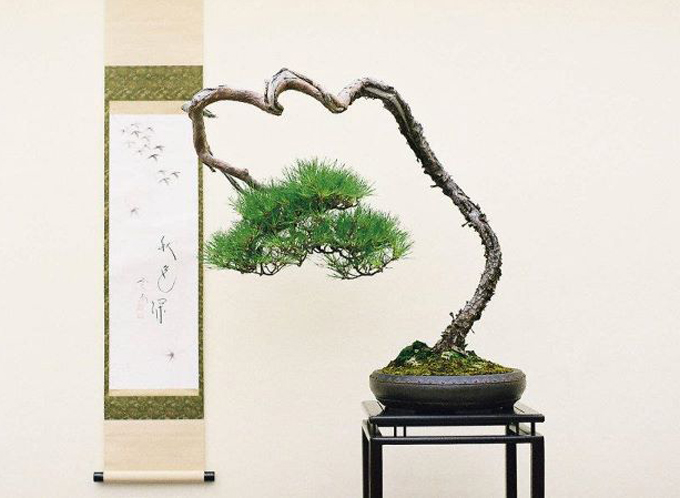 This triple humpbacked pine combines elegance and a rugged wildness. I don’t know who it belongs to (please don’t show me up by pointing out that it’s in an issue of Bonsai Today or one of our books, there’s no more room on my face for any more egg), but I’d guess that it’s Japanese. It’s from Lombok’s photos on facebook. Like about half of the bonsai you find on facebook, it’s unattributed.
This triple humpbacked pine combines elegance and a rugged wildness. I don’t know who it belongs to (please don’t show me up by pointing out that it’s in an issue of Bonsai Today or one of our books, there’s no more room on my face for any more egg), but I’d guess that it’s Japanese. It’s from Lombok’s photos on facebook. Like about half of the bonsai you find on facebook, it’s unattributed.
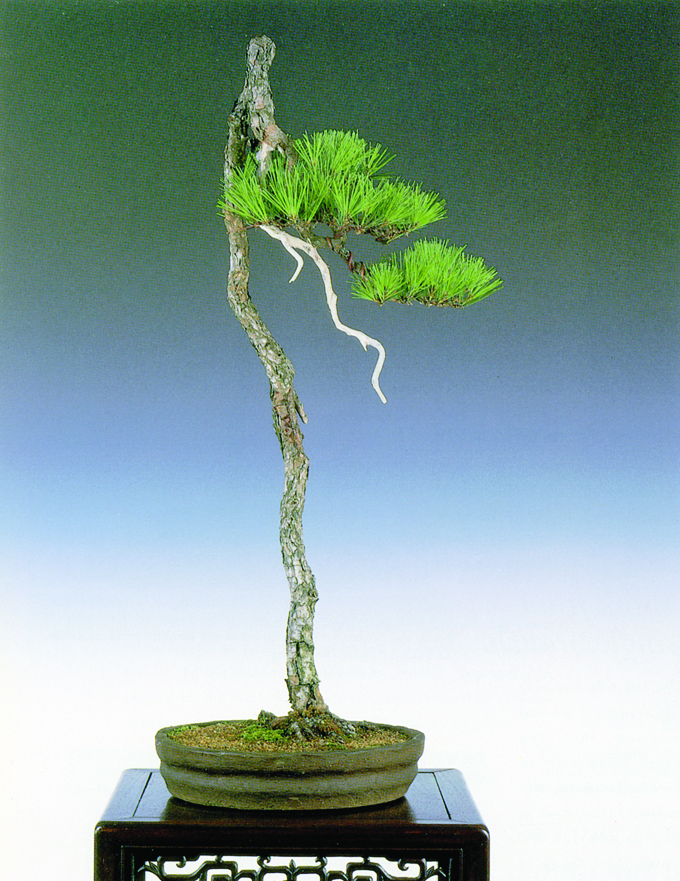 A study in simplicity. This Japanese Red pine (Pinus densiflora) is the result of a challenge to Masahiko Kimura (the world’s best know bonsai artist) to create a bonsai with only one branch. It’s from The Magician: The Bonsai Art of Kimura 2. The original article is from Bonsai Today issue 69.
A study in simplicity. This Japanese Red pine (Pinus densiflora) is the result of a challenge to Masahiko Kimura (the world’s best know bonsai artist) to create a bonsai with only one branch. It’s from The Magician: The Bonsai Art of Kimura 2. The original article is from Bonsai Today issue 69.
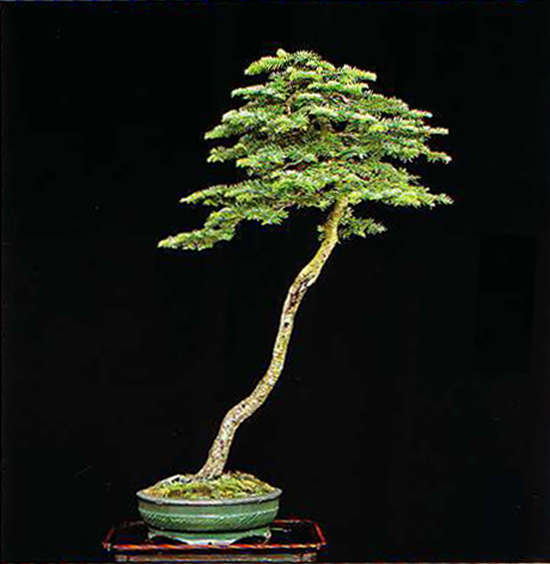 Few and far between. Have you ever seen a true fir (Abies) bonsai? How about a bunjin fir bonsai? This one is a Grand fir (Abies grandis) that belongs to Lee Cheatle. Grand firs are native to the Pacific Northwest. The photo is from the 2010 US National Bonsai Album (sold out, but we still have 2012 already deeply discounted and now an extra 25% off).
Few and far between. Have you ever seen a true fir (Abies) bonsai? How about a bunjin fir bonsai? This one is a Grand fir (Abies grandis) that belongs to Lee Cheatle. Grand firs are native to the Pacific Northwest. The photo is from the 2010 US National Bonsai Album (sold out, but we still have 2012 already deeply discounted and now an extra 25% off).
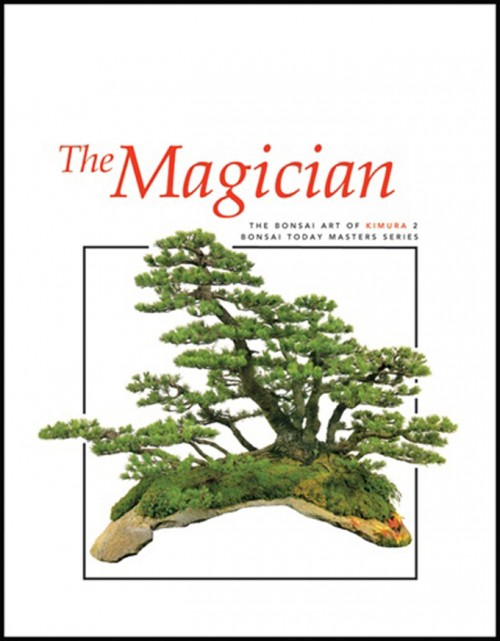 The cover of The Magician which is mentioned twice above. Already deeply discounted, and now, along with all of our books, is currently an extra 25% off at Stone Lantern.
The cover of The Magician which is mentioned twice above. Already deeply discounted, and now, along with all of our books, is currently an extra 25% off at Stone Lantern.
Beautiful examples of my favorite style. Up there with han-kengai.
Hold still my heart.